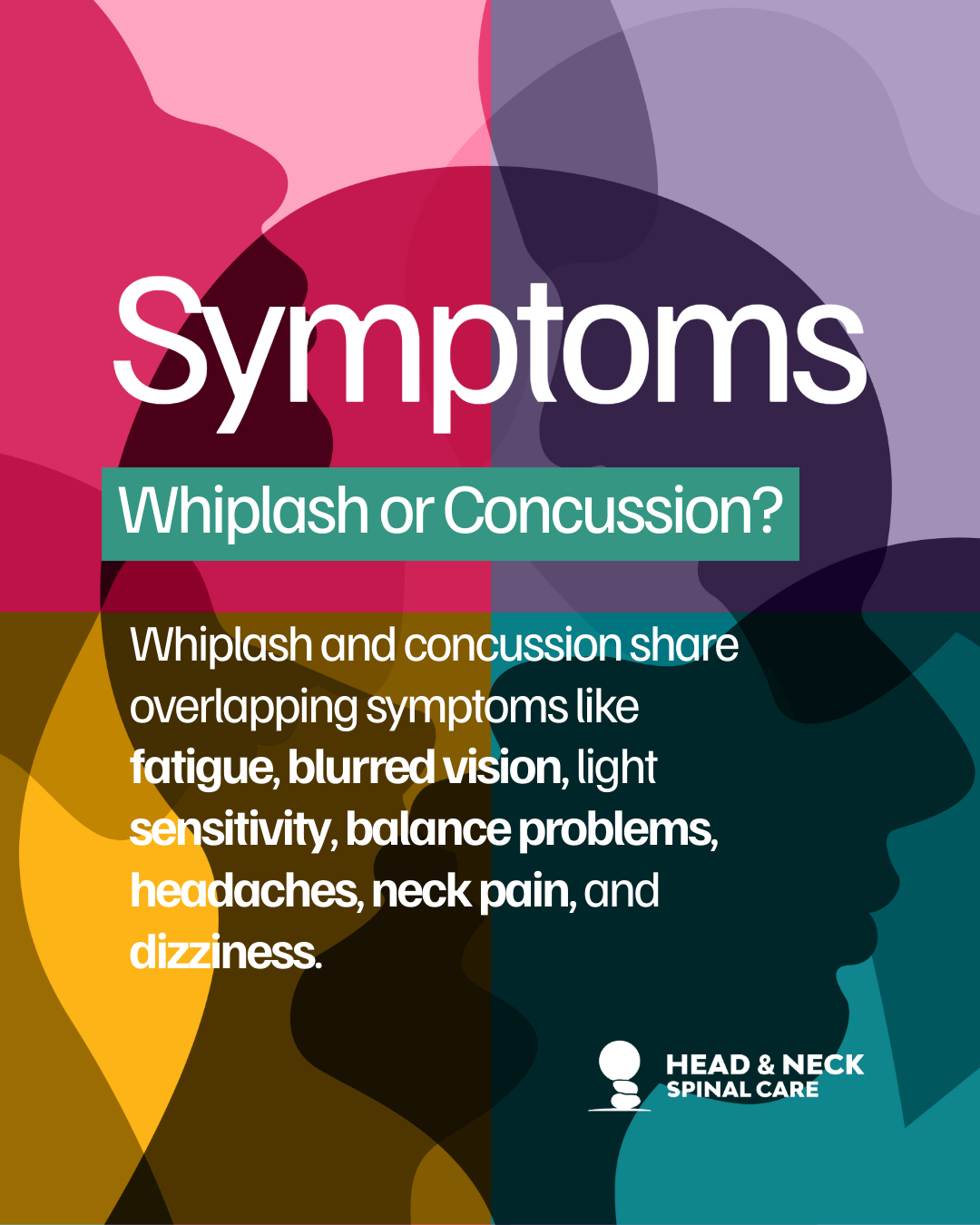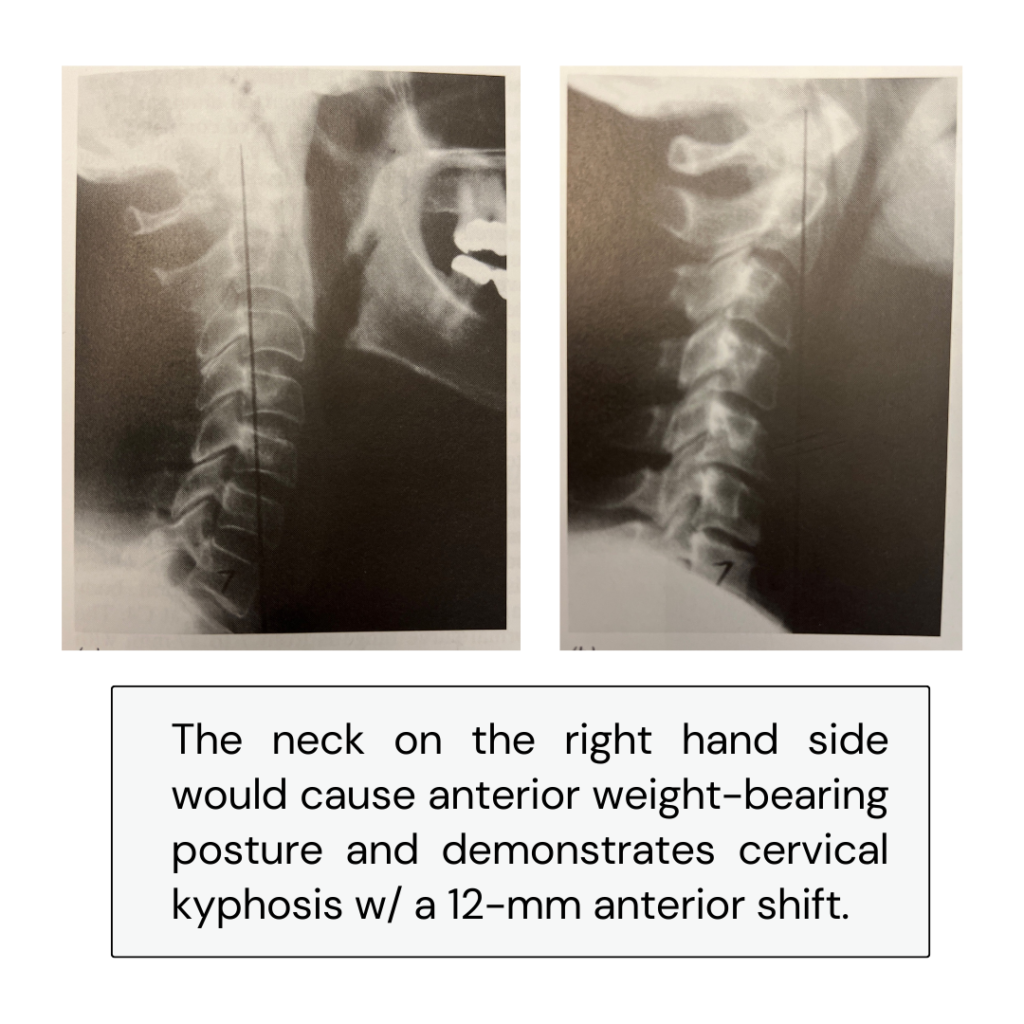
Silvka, DC
How Your Cervical Curve Affects Your Health and Speeds Up Disc Degeneration
“Do I have a forward head posture?”
It’s a question I often get from patients, friends, and family. Unfortunately, it’s not something I can answer with just a glance. While posture from the outside gives us some clues, the truth lies deeper. You need X-rays to truly assess the alignment and curvature of your cervical spine.
What many people don’t realize is that the cervical curve (neck), the natural arc shape formed by the alignment of the blocks of the neck vertebrae, plays a major role in your long-term spinal health. Well aligned spine especially helps in how it distributes gravitational stress along the spinal discs and joints. On the contrary, abnormal neck curvature, we call it a loss of cervical lordosis or a reversed curve, can contribute to chronic neck pain, posture issues, and even accelerated degenerative disc disease (DDD).
What Is the Cervical Curve and Why Does It Matter?
The cervical spine, made up of seven vertebrae (C1–C7), is designed to form a gentle lordotic curve, arcing slightly backward like a C-shaped curve. This natural curvature is not just an anatomical design, it’s a critical part of how your body supports your head and balances gravitational forces.
When this curve straightens or reverses (a condition known as loss of cervical lordosis), it can disrupt your body’s alignment and increase abnormal stress on the spinal joints. Over time, this stress may accelerate disc degeneration, arthritis, and can lead to myriads of neurological symptoms due to spinal cord or nerve root irritation.
Some of the common consequences of forward head posture are following:
- Disc Compression: Forward head posture increases the weight load on cervical discs. A 1-inch shift can add up to 10–12 pounds of additional force.
- Faster Degeneration: Chronic stress on anterior disc surfaces can lead to disc thinning, herniation, and bone spur formation.
- Postural Chain Reactions: The imbalance in the neck often correlates with pelvic tilt, thoracic hunching, and low back compensation.
- Neurological Impact: In extreme cases, cervical curve loss can narrow the spinal canal, contributing to radiculopathy or myelopathy symptoms.
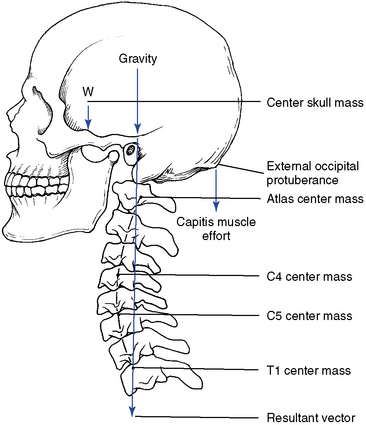
Figure 5-39 The center of gravity for the skull. If the cervical curve changes, the center of gravity shifts.
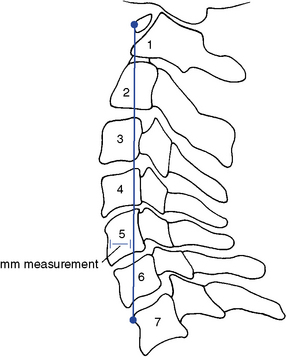
Figure 5-42 Jochumsen’s measuring procedure for determining the adequacy of the cervical curve.
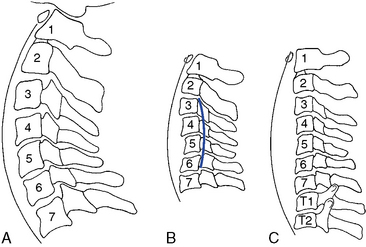
Figure 5-40 The cervical curve extending from C1 to T2. A, Normal. B, Hypolordosis with a kyphosis involving the middle segments. C, Alordotic
From White AA, Panjabi MM: Clinical biomechanics of the spine, ed 2, Philadelphia, 1990, JB Lippincott.)
Why Forward Head Posture Is More Than Just a Cosmetic Issue
When the head starts leaning toward forward, we call it forward head posture or anterior head carriage. Our body adapts to the abnormal position of our head, and this often comes with a consequence of shifting the gravitational line away from where it’s supposed to be. It’s a clear sign that the musculoskeletal system is under constant unnecessary, asymmetric load.
Using a lateral cervical X-ray, we can measure this shift by drawing a vertical line from the top of the C2 vertebra straight down to the bottom edge of the film. If this line lands in front of the C7 vertebra, it means the head is carried forward of the body’s center of gravity. The further this line shifts forward, the more compressive force is placed on the front of the spinal discs and joints.
In one study image (Silvka, DC), a 47-year-old male with cervical kyphosis showed a 12 mm anterior gravitational line shift, indicating significant stress on the front of the cervical spine. Our bony structure adapts to this over time and changes its shape to accommodate for this changes, for instance, an osteophyte.
Preventing and Reversing Cervical Curve Loss
While genetics, aging, and past injuries can influence spinal structure, lifestyle factors and posture habits play a big role. To maintain or improve your cervical curve:
- Focus on ergonomics, especially if you are working in sitting position for prolonged period of time. Adjusting monitor height and being conscious of head positioning are very important.
- Strengthen upper back muscles to keep your head upright.
- Increase awareness of your body posture and position at all times.
- Consider structural spinal correction through upper cervical chiropractic care, which can help restore alignment from the top down.
Why Upper Cervical Chiropractic?
The curve in your neck is more than just a shape. It’s a reflection of how well your spine is handling the gravitational force on your body. If you’re noticing forward head posture, neck stiffness, chronic discomfort, or even headaches, it may be worth taking a closer look at your head and neck alignment. Upper cervical chiropractic (NUCCA) can assess through very precise X-ray analysis to understand how the upper neck misalignment influences on overall spinal structure.
The relationship between cervical spine curvature and overall health represents one of the most underappreciated aspects of preventive healthcare. While the effects of poor cervical alignment may develop gradually over years, the long-term consequences for disc health and overall quality of life can be profound.
Don’t wait until pain becomes a constant companion. If you suspect you may have cervical spine alignment issues, consider seeking professional evaluation by a NUCCA chiropractor today.
Reference
Figure 4.20 (a) Cervical gravitational line (courtesy Don R Leck, BSc, DC, Toronto, Ontario, Canada.) (b) This 47-year-old man demonstrates cervical kyphosis with a 12-mm anterior shift in the gravitational line (courtesy Leo Silvka, DC, FATA, Toronto, Ontario, Canada).




